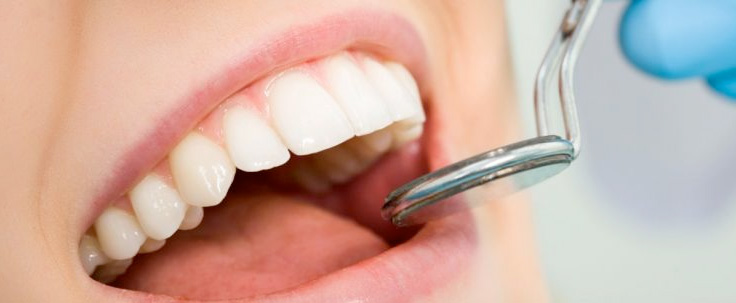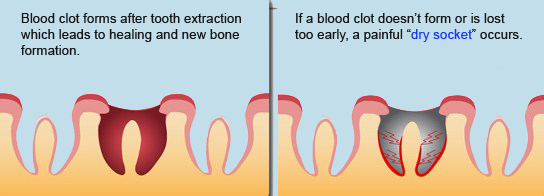This article will serve as a practical guide to tooth extraction and tooth extraction aftercare. Its main purpose is to underline the basics of tooth extraction, from procedures and possible complications to recommended practices and replacement solutions.
We will aim to give you a better understanding of what to expect after a tooth extraction procedure and we will provide you with some practical advice regarding practices during the post-extraction period.
By the end of this article, you will have a basic understanding of how to best manage tooth extraction, should you ever require such a procedure.
What is Tooth Extraction
Tooth extraction, or tooth pulling, is a procedure in dentistry by which a tooth is completely removed from the mouth, or more specifically, from its socket in the jawbone (also known as the alveolar socket). Tooth extraction is a relatively simple procedure in some cases. It can get very complicated, however, depending on the tooth being extracted and associated dental illness.
In general, the procedure takes a relatively short amount of time and it involves the dentist manually removing the tooth. Teeth which are difficult to remove might warrant complicated procedures and techniques. In some cases, maxillofacial surgery might also be required.
Dentists usually recommend tooth extraction when the tooth or teeth in question have been severely damaged and cannot serve any further functional or esthetic purpose. Once removed, the patient should observe a set of tooth extraction aftercare principles which will assist in a successful recovery. Depending on the situation, the patient can also ask for replacements. There are several replacement options, and the dentist should point toward the one the best matches the patient’s profile.

When is Tooth Extraction Performed?
Tooth extraction is necessary when the tooth in question can no longer fulfill any of its purposes. Usually, dentists advise extraction in the following situations:
- Severe Tooth Decay. Cavities have plagued mankind for a very long time. They are colonies of bacteria which slowly destroy the tooth’s outer layer: the enamel. If left untreated, caries can penetrate deep inside the tooth and cause extreme tooth decay. In this case, extraction is sometimes required in order to avoid the spread of infection.

- Tooth and/or Gum Infection. Infections ca be a major reason for tooth extraction. The main aim would be to limit the spread of infection to other teeth, but also to prevent periodontal disease. Periodontosis, for instance, manifests itself through receding gum lines, which can lead to tooth loss.
- Some orthodontic conditions. In some cases, misaligned teeth require extra space in order to make orthodontic treatment efficient. Thus, a tooth might be extracted in order to allow the other teeth to be moved into a correct position.
- Impacted wisdom teeth. Impacted wisdom teeth are often removed, though it is not always necessary. This is one of the most complicated extractions and it sometimes requires complicated maxillofacial surgery. However, not all wisdom teeth should be removed. Read more about wisdom tooth extraction aftercare here.
- Supernumerary Teeth. In some rare cases, people have more teeth than usual. The extra teeth can cause a variety of dental problems and their removal is usually recommended.
Tooth Extraction Procedures
The specifics of tooth extraction aftercare are conditioned by the procedure which was used during the extraction and the degree to which it went according to plan. Some extractions are rather simple and straightforward, while others are very complicated. In any case, they usually fall in one of these two categories:
- Regular Extractions. The easy type of tooth extraction. After applying a local anesthetic, your dentist will use dental elevators and forcipes to slowly move the tooth forward and backward until the periodontal cartilage (i.e. the soft tissue holding your tooth in place) is sufficiently weakened. Then, by applying steady upward force, the tooth is removed from its socket.
- Dental Surgery. If the tooth is not in a normal position, extraction may entail a more complicated surgical procedure. Depending on the case, the dentist will make an incision in your gum to reach a partially erupted tooth, or even remove pieces of your jawbone. Cutting the tooth into pieces inside the socket could be necessary before the actual removal. As this would be unbearably painful, a general anesthetic is standard practice in this situation.
After the procedure, your dentist will instruct you regarding a tooth extraction aftercare routine. It should be diligently observed if severe complications are to be avoided. However, there are some instances where complications can arise due to the dentist making a mistake. With that in mind, remember to always choose State accredited dental practitioners.
Tooth Extraction Aftercare – Possible Complications
Tooth extraction can generate a number of complications. The responsibility of avoiding them falls on both you and your dentist. If tooth extraction aftercare is not performed as it should be, complications can be very severe and might result in a permanent decrease in your quality of life. Some complications which can arise after an extraction are as follows, ordered by severity:
- Bleeding. An obvious consequence of tooth extraction, bleeding will usually occur for no more than 7-8 hours after the procedure (in the case of a regular extraction). Your dentist will instruct you on how to encourage blood clotting and healing. To avoid prolonged bleeding, keep the pressure on the wound by using a special bandage (which the dentist will provide). You should also avoid eating and drinking for an extended number of hours. Furthermore, avoid any kind of disruptive activity like speaking (as much as possible), smoking and pressing against the wound with your tongue.
- Swelling. A normal occurrence, swelling should normally subside after a few days. Considerable swelling might occur after a more complicated or invasive dental surgery procedure. Your dentist could prescribe medication to keep it under control during the first part of your recovery.
- Infection. Due to the location of the wound, it is inevitable that some bacteria will be present in and around the extraction location. To avoid complications, dentists usually prescribe antibiotics as a prevention method. However, there is an ongoing debate as to whether the negative impact of using antibiotics outweighs the risk of a possible mild infection (it is common knowledge that antibiotics have a whole set of negative secondary effects throughout the body).
- Sinus Exposure. This is a more serious complication, which might occur during the extraction of upper molars. The sinus cavity can be found just above the roots of your upper molars and is separated from them by a thin layer of bone and an inner protective membrane. If the roots of the tooth are too close to the sinus cavity, the extraction might cause a puncturing of the bone (and of the membrane in some cases). This would expose your sinus cavity to oral bacteria and could cause other maxillofacial illness. In rare cases, the roots are already in the sinus cavity itself. If the sinus cavity is breached, your dentist and your doctor will provide specialized treatment, though it is highly advisable to entirely avoid a sinus cavity breach.
- Dry Socket. Also known as Alveolar Osteitis, a dry socket basically means exposed bone in your tooth socket after an extraction. Severe pain, infections, and bad breath are just some of the symptoms. To avoid developing this condition, follow post-operatory instructions to the letter and try to disturb the wound as little as possible. Any disruptive activity in the wound’s area will prevent blood from clotting and might facilitate the appearance of a dry socket.

- Damage to Other Teeth. In some cases, tooth extraction can cause damage to adjacent teeth, especially in cases of misaligned teeth and difficult types of tooth impaction. It is up to your dentist’s skill to prevent this from happening.
- Nerve Damage. Some molars have roots which are dangerously close to important nerves in your jaw. In some cases, the roots have grown right beside or around the nerve. If that tooth required extraction, even the smallest misstep could cause nerve damage. If nerve damage occurs, you could lose all sense in your lower jaw. This will lead to a great decrease in your quality of life. Therefore, always ask your dentist about this before an extraction.
Tooth Extraction Aftercare – Recommended Practices
Your goal should be to minimize the risk of getting some of the conditions we have just described. As such, there is a strict tooth extraction aftercare strategy that patients should follow, without interruption, for as long as their dental care specialist recommends. Depending on the particulars of your case, specialized tooth extraction aftercare might be required. However, here are a number of generally recommended practices that all dental patients should be aware of.
- Take the medication prescribed by your dentist, exactly as prescribed. Whether painkillers, antibiotics or anti-inflammatory treatment, any lapse in treatment is not an option.
- Rinse your mouth with salt water. At your dentist’s recommendation, slowly rinse your mouth with salt water, but not earlier than one day after the extraction. Salt is a natural antibiotic and also has anti-inflammatory properties.
- Regularly change your bandage to prevent bacteria from taking a hold.
- Keep your head propped up to avoid blood pressure inside the head.
- Don’t smoke. (Duh)
- Only eat soft foods. Hard foods will prevent your blood from clotting and will re-open your wound. In addition, food remains will be very difficult to clean from inside your wound.
- Don’t use straws and try to limit mouth movement as much as possible.
- Keep your tongue away from the wound, as any disruptive movement will negatively impact blood clotting and healing.
- Take a break from arduous physical activity. High blood pressure and increased pulse can cause your wound to reopen and facilitate bleeding. Avoid making any significant physical effort for a couple of days.
Tooth Extraction Aftercare – Replacement Solutions
There are several solutions to replacing lost teeth. The best (and most expensive) one is a specialized implant, which is set directly in your tooth socket. Made from porcelain and resistant metal alloys, implants have a very long lifespan if properly taken care of.
Bridges and dentures are also a common solution, though they are less resistant than implants. Depending on your age and on the specifics of your dental condition, your dentist will recommend the best option.
Tooth extraction aftercare is very important and should not be neglected. If serious post-extraction complications are to be avoided, the dentist’s advice on the matter should be taken very seriously. Finally, do not interrupt tooth extraction aftercare when symptoms subside, but continue all prescribed treatment until the end and keep a high standard of oral hygiene.

I appreciate that you took the time to explain what tooth extraction is, as well as the fact that the procedure takes a relatively short amount of time and only occasionally warrants complicated procedures and techniques. I feel like the term tooth extraction is a little intimidating, so knowing exactly what we are dealing with is very calming. It would make sense to me when choosing a dentist to be sure you find someone who is able to handle any special procedures like this one that you may need.
Indeed, the more informed we are, the better decisions we make. You can take a look also at https://healthrow.net/root-canal-vs-extraction/, and discuss with your dentist. Maybe a root canal is better in your case.